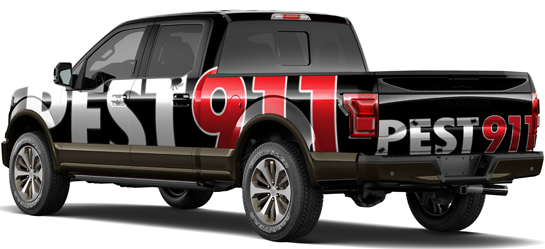Can Termites Survive Cold Weather in Ocala, FL? How to Tell What Types of Termite Pests Are Active in Your Home this Fall
When people hear the word “termites” they immediately shudder and have a tendency to become withdrawn from the topic, like shying away from the conversation will somehow spare them from a termite siege. But the best thing to actually do is become acquainted with the little destroyers. That way you can recognize the signs of an attack, and call in the professionals before any much damage can be inflicted. Termites are responsible for millions of dollars a year in damages across the country, devouring homes and businesses alike. To avoid being victimized, gather the knowledge you can to take down the enemies afoot. Pest 911 shine some light on the termites that could potentially be eating their way through your home or business!
Termite Activity in Cold Weather
Most termites remain active in the fall and winter but it’s unlikely you will see swarming termites in the cooler weather across most of the country. However, in the southern region of Florida where temperatures inside or outside homes can reach 70 degrees or higher, swarming termites may be seen year round! Subterranean and drywood termites feasting on your home’s foundations and walls are just not as affected by our cold temperatures.
Types of Termites Found in Florida
There are 4 basic groups of termites species found within the Florida borders.
Subterranean Termites – favor moist environments and soil. The subterranean termites live in soil, and will construct tubes made from the mud to pillage the wood sustenance and return back to the soil. They consume cellulose materials, wood from fallen logs, scrap wood, and even your home or business. They can be introduced to your home by excavating through the soil or during the spring when the swarmer termites (reproductive termites) move on to expand the colony by establishing a new one, usually in fairly close proximity. They have wings, and once they choose a new location to begin reproduction, they shed the wings.
Dampwood Termites – In need of consistently wet, moist wood. These termites requires a significant of moist wood conditions, they rarely infest homes or businesses.
Drywood Termites – little to no moisture is required for survival. They eat and live within the confines of the dry wood. Commonly found infesting the wood on siding, eaves, cornices, and wood.
Conehead Termites – More isolated to Southern Florida, they are very similar to subterranean termites, but have unique habits in regards to their foraging and nesting techniques.
Signs You Have Termites
– Termites are productive in their foraging and wood consumption all year long, however, a sure sign of termites is seeing the additional activity is seeing the swarmers beginning new colonies. Noticing piles of wings along the windows sills, in light fixtures, or in other areas throughout the home is a good indication.
– If your home or businesses is corrupt with subterranean termites you may observe their mud tubing, or dirt buildup along the sides of walls, window sills, baseboards, and so on. If wood looks like it is buckling, warping, or make a hollow sound when tapping on the exterior, as well as appearing damaged – very similar to wood damaged by water.
– Drywood termite’s infestations usually are first noticed with tiny fecal pallets where they are excavating, as they are a bit cleaner than the subterranean termites and kick out the pellets through tiny holes. The holes might also grab your attention; if you see the holes inspect the area for their droppings.
Termite Control
If you suspect your home or business is infested with termites, call Pest 911. Our experts can perform a comprehensive inspection, and consult with you on the findings as well as the solutions to remove the infestation from your home. Do not delay; the longer termites are permitted to squat in your home the more damage they will ensue.


